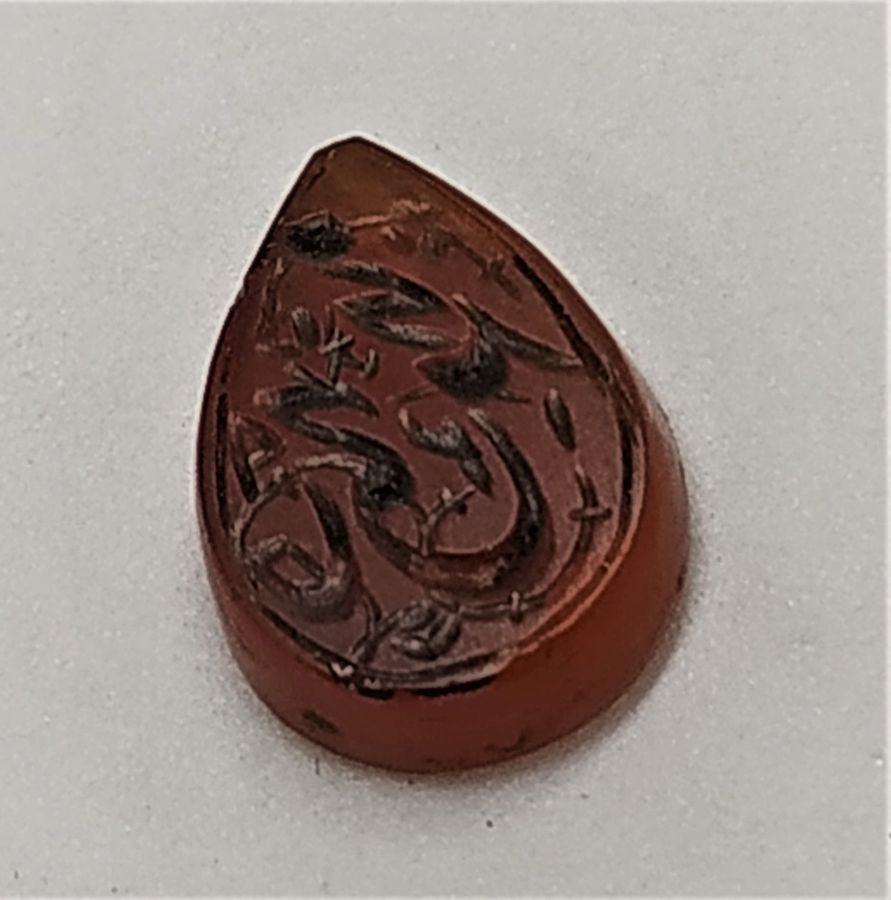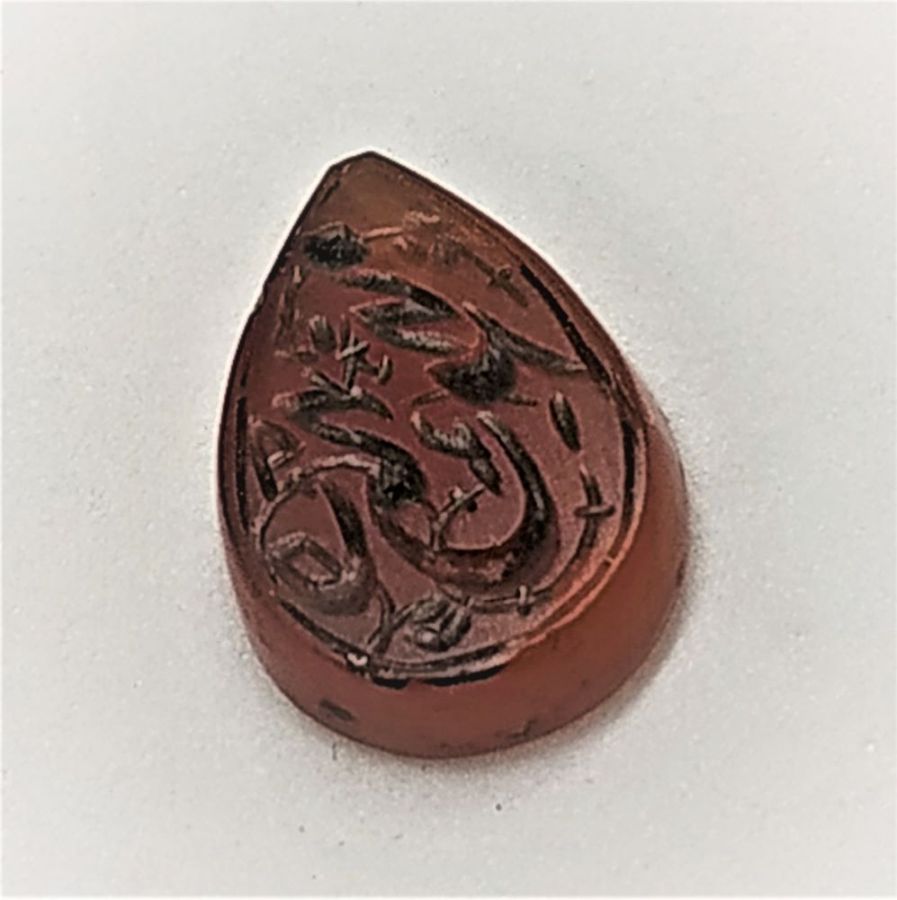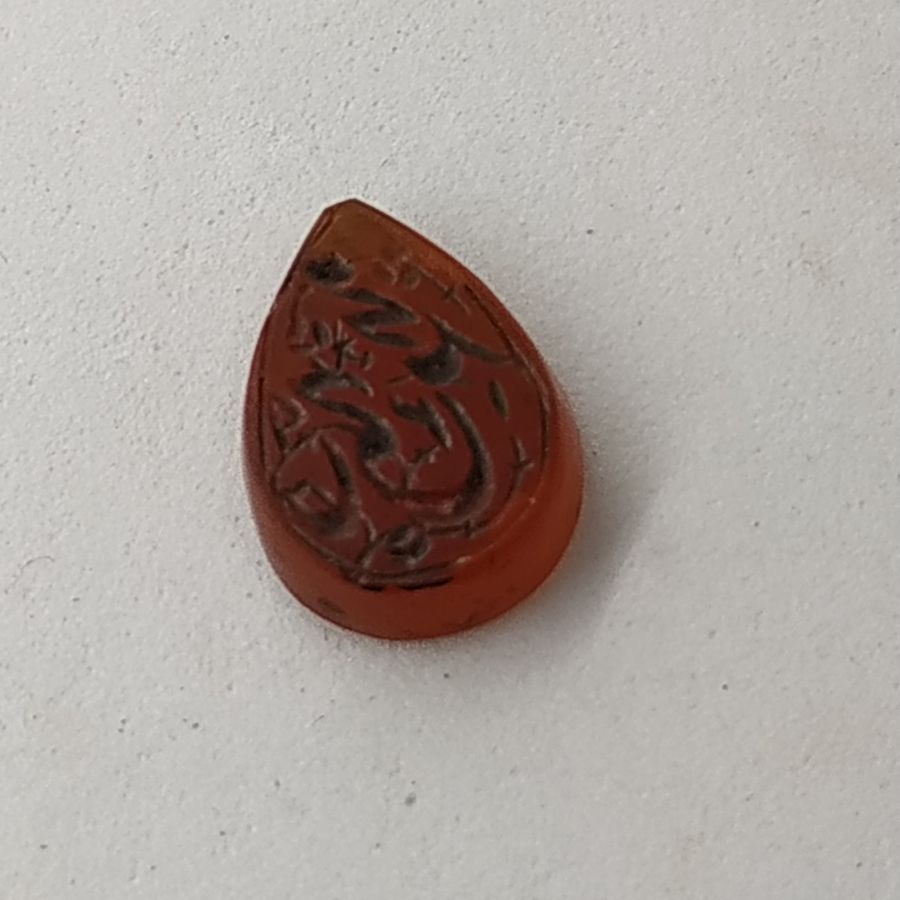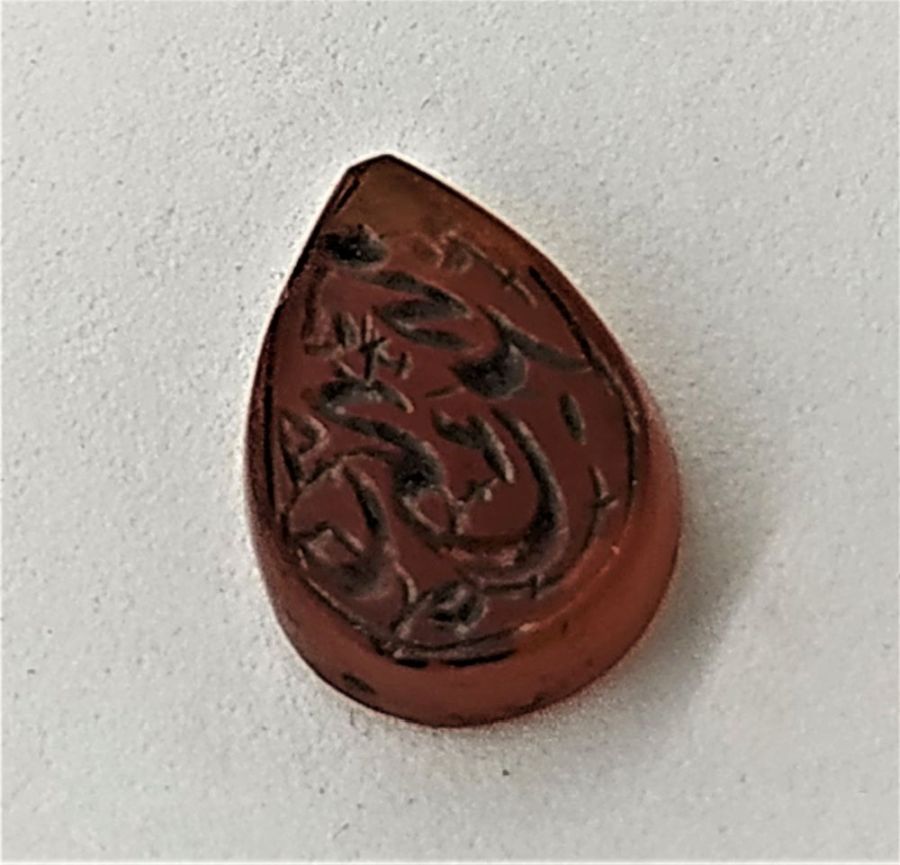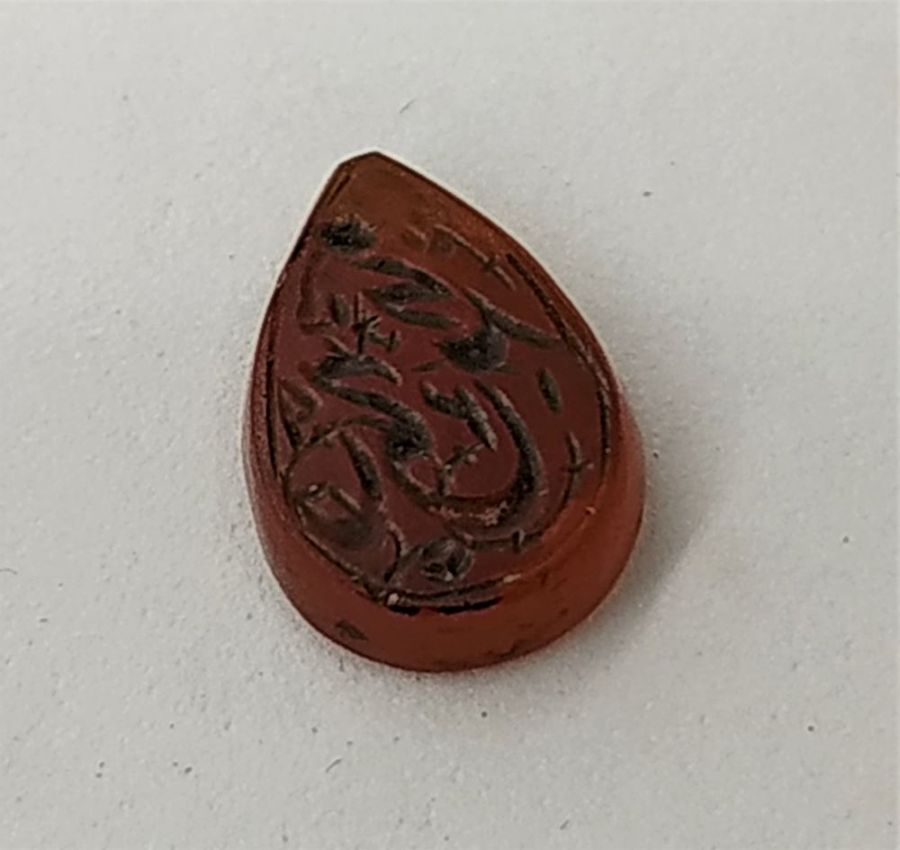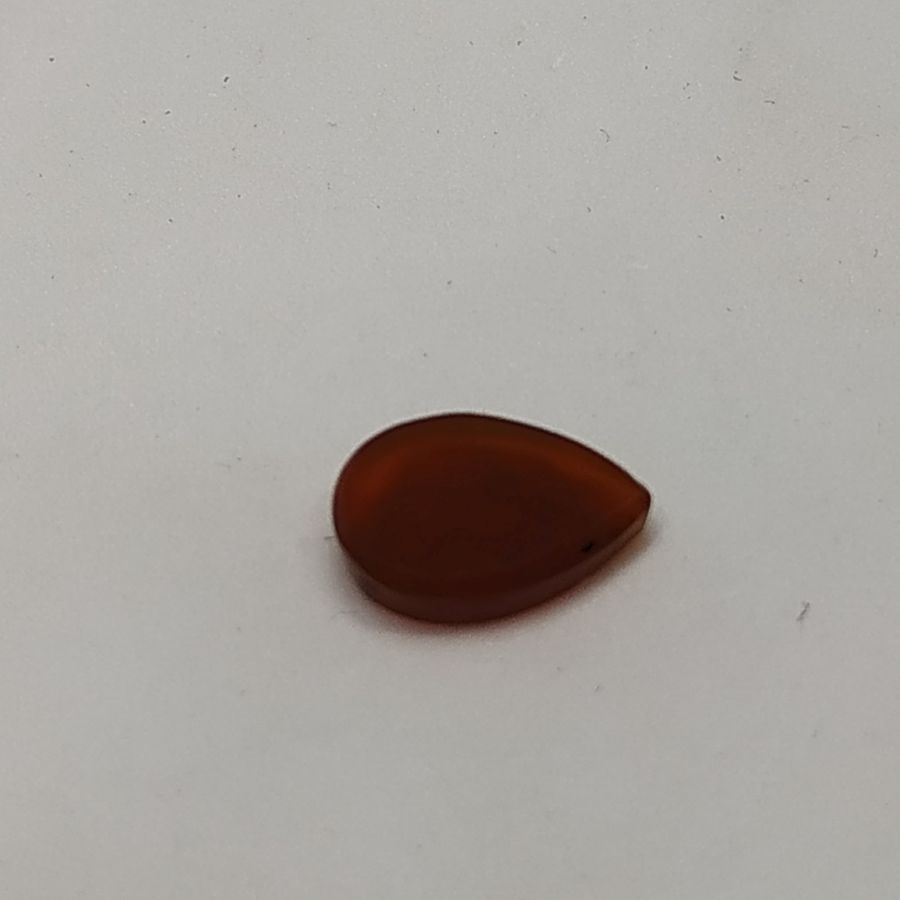Antique seal Agate Tear drop shape stone with ancient Arabic characteristic name used at ancient times as a personal seal found in the middle east. Antique seal Agate Tear stone shape 17th century middle East.
Dimension 0.8 cm X 1.5 cm approximately. In ancient history, the seal task was to leave a personal impression on important matters such as wax on letters or on paper treaties. This way the recipient of the document would identify the impression left on the paper, wax or clay authenticity.
The seal was engraved cut in the stone in reverse, so once one presses it on the wax or clay or paper the writing would appear clearly and correctly on the document.
Most antique seals have only one side impression, but after medieval in Europe started having double sided seals for double security the document was not opened.
In ancient times there were also cylinder seal beads with the personal carvings and they were rolled on the wax, clay or paper. The cylinder seals and seal beads were worn usually around the neck with a rope or chain.
The Romans used to engrave human faces on the stone and the medieval Europe followed that trend.
In the far East such as in Japan, china and Korea, they used seal made from Jade stones, wood, glass and soap stones.
The uniqueness of antique seals is that each person would commission his own demands for his personal seal. The artisan creating the seal has to use ingenuity so to create a new design hard to copy for each customer.
Personal seals were used commonly in early civilization such as Mesopotamia up to and its surrounding areas. In every antiquity excavation, you might find many different designed seal.
In modern era, the stone seal were substituted by rubber stamps and ink.

